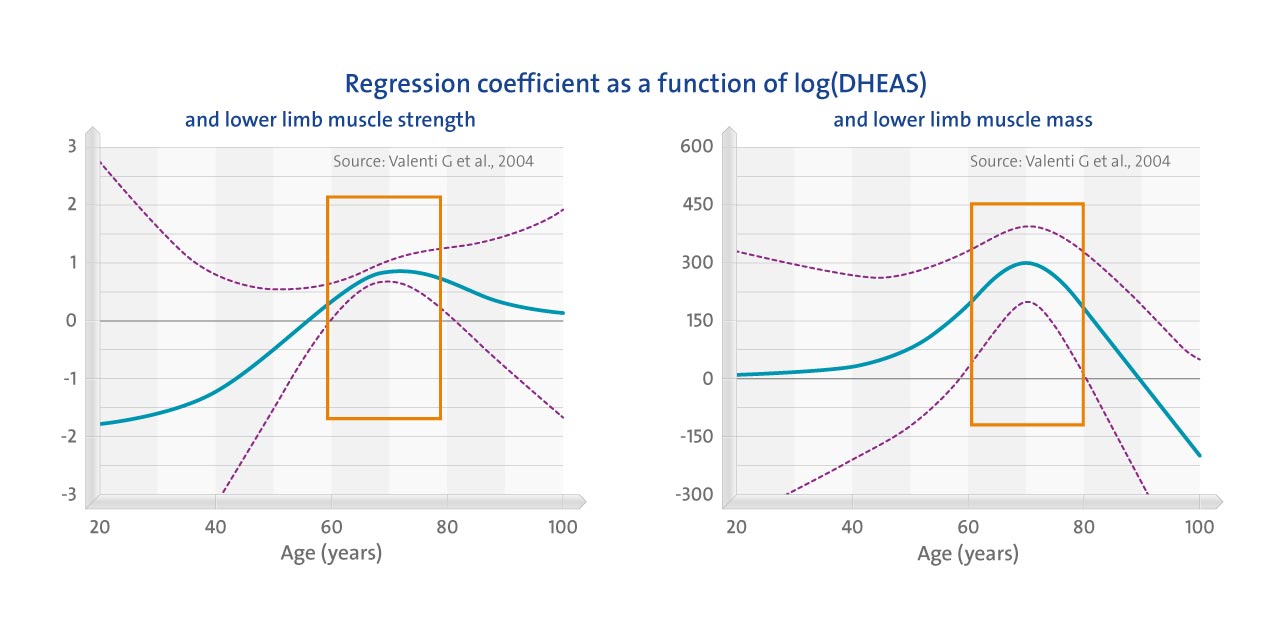Background
It has been suggested that the reduced production of dehydroepiandrosterone sulfate (DHEAS) may be partially responsible for the decline of muscle strength and mass that often occurs with aging. However, this hypothesis has been only tested in small series of normal volunteers, with little consideration for potential confounders. Using data from a representative sample of 558 men (20–95 years) we tested the hypothesis that circulating DHEAS is independently associated with muscle strength and mass.
Methods
Data are from InCHIANTI, an epidemiological study conducted in the Chianti geographic area (Tuscany, Italy). DHEAS serum levels were related to lower extremity muscle strength assessed by hand-held dynamometry and calf muscle area estimated from quantitative computerized tomography. Confounders included age, anthropometrics, physical activity, smoking, energy and alcohol intake, albumin, lipids, interleukin-6, comorbidity, depressive symptoms, and disability in activities of daily living.
Results
In fully adjusted models predicting lower extremity muscle strength and calf muscle area, we found significant age*log DHEAS interactions, suggesting that the relationship between DHEAS levels and muscle parameters differs across the life span. In age-stratified models adjusted for confounders, serum DHEAS was an independent predictor of muscle strength (p <.02) and mass (p <.01), but only for men between 60 and 79 years of age. After adjusting these models for serum-free or bioavailable testosterone, results were unchanged.
Conclusions
In men aged 60–79 years, circulating DHEAS is an independent correlate of muscle strength and calf muscle area. The possible causal role of declining DHEAS in age-related sarcopenia should be further explored in longitudinal studies.
